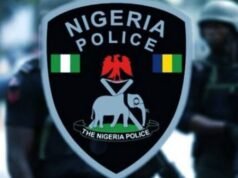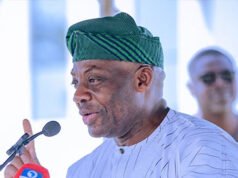A beautiful, bright September afternoon in Orem, Utah, ended in shock and grief when Charlie Kirk, a well-known conservative activist and close ally of U.S. President Donald Trump, was shot while taking part in a public event at Utah Valley University (UVU). The incident happened at about 12:20pm local time on 10 September 2025, during a session that organisers billed as part of Kirk’s “American Comeback Tour” and the “Prove Me Wrong” series — a tented Q&A set up for students and members of the public. According to Al Jazeera, video and eyewitness accounts show that the crowd of roughly 3,000 people had gathered to listen and to ask questions when a single shot rang out. Kirk clutched his neck and collapsed; he was taken to the hospital and later pronounced dead.
Eyewitnesses and later reporting made clear that the moment before the shot was ordinary: a back-and-forth between Kirk and an audience member over mass shootings in America. Several attendees initially thought the loud crack was part of the performance or a prop — until the panic began and people ran for cover. According to People.com, the scene, captured on mobile phones and quickly shared across social platforms, showed students and families scrambling, many lying flat on the grass or running away as event stewards tried to shepherd people to safety. Some witnesses have described an eerie confusion — the sort that follows when ordinary public life is ruptured by sudden violence.
By late afternoon, investigators and federal authorities were on the ground. Local police said the shot appeared to have come from a distance and that evidence suggested it may have been fired from a rooftop or another elevated position somewhere on or near the university campus. Law enforcement later recovered what they described as a bolt-action rifle in the vicinity and circulated surveillance stills and photos to the public as they hunted for a suspect. The FBI joined the probe as the search widened.

Table of Contents
Who Charlie Kirk was — the man at the centre of a polarised moment
Charlie Kirk was a political organiser who rose fast in America’s conservative movement. He cofounded Turning Point USA (TPUSA) while still in his late teens and turned that organisation into a national platform targeting youth audiences — a campus network, events and a steady stream of media appearances. To supporters, Kirk was an energetic youth leader who could talk directly to students and translate conservative ideas into social-media friendly messages. To critics, he was a polarising culture warrior whose tactics and rhetoric helped harden political divisions. By 2025 he had become an unmistakable figure in right-wing politics and a public face of young-adult conservative organising, according to The Guardian.
At 31, Kirk’s voice cut across campuses, cable news and digital platforms. He had cultivated relationships with elected leaders on the right, and his tours regularly drew both fervent fans and vociferous critics. Those who knew him or had worked with him often described a driven, media-savvy operator who specialised in getting attention — for better and for worse. Whether you admired him or not, it was hard to miss him in the noise of modern political media.
The immediate context of the UVU event underlines why the attack felt particularly fraught. Kirk had been taking questions about gun violence and, by witness accounts, answering a query about mass shootings — an already sensitive subject in a country still reeling from repeated mass-shooting events. That exchange, captured in multiple clips circulating online, was the last public moment before the fatal shot. Reporting indicates the audience interaction made the act look even more chilling to observers, because it came in the midst of a discussion about the very violence that then unfolded.
The investigation, the reaction and the wider fallout
Law enforcement described the shooting as targeted and methodical rather than chaotic; early evidence suggested a single, well-placed shot fired from a distance. Authorities quickly focused on nearby elevated vantage points, and investigators later recovered a suspected rifle near campus as they pieced together the shooter’s likely route. Local and federal investigators canvassed witnesses, collected footage and scoured the perimeter for leads. The FBI also released grainy surveillance images and offered a reward for information leading to the suspect’s arrest. Those steps were meant to push the case from immediate rescue and medical response into a full criminal investigation.
Political figures across the spectrum responded within hours. Former President Trump confirmed Kirk’s death and paid tribute to him as a figure who “connected with America’s youth,” while other leaders denounced what many called an assassination of a public political voice. Utah’s governor labelled the killing a “political assassination,” reflecting how charged the environment has become around public figures and political events. At the same time, voices from other political quarters urged caution about rushing to assign motives before investigators completed their work. The immediate political aftermath was a mixture of grief, outrage and renewed warnings about the dangers of increasingly hostile political discourse in the United States.
Universities across America watched closely as campus officials and student leaders grappled with the fallout. UVU closed parts of its campus temporarily and offered counselling and support services to students and staff. Student-run political groups and campus communities — many of whom regularly disagree with Kirk’s views — found themselves united in shock; the shared experience of a violent breach of campus safety cut across ideology in the immediate hours after the shooting. Many students later said the event amplified fears they already carried about safety at public gatherings and the rising tempo of political conflict on campus.
Newsrooms and social platforms were also forced into hard choices. Users and editors debated how to cover the attack responsibly: how much to show from the raw, sometimes graphic footage; how to avoid amplifying panic; and how to provide context rather than partisan spin. That conversation — about ethics in an era where anyone can transmit live video — is part of the broader story the shooting has raised about information, accountability and the responsibilities of both media and citizens. Several major outlets emphasised that while the killer remained at large, speculation could not replace evidence; that investigative authorities should be allowed to do their work; and that national leaders should refrain from inflaming tensions.

Why this one moment matters — politics, campuses and a country at a crossroads
There are at least three reasons why the killing of Charlie Kirk at a university event matters beyond the tragic loss of a single life.
First, it underlines how politicised violence has become a constant risk for public figures. The United States has in recent years seen a worrying pattern of attacks targeted at political actors, from local officials to national leaders. When a high-profile activist is killed in a public space, it intensifies debate about rhetoric, safety and the responsibility of political leaders to temper inflammatory language. In this case, the fact that Kirk was engaged in a conversation about mass shootings — and that a question on a sensitive subgroup prompted part of the exchange — only sharpened that debate.
Second, it forces a reckoning about campus safety. Universities are meant to be arenas for contesting ideas without fear of physical harm. When an event aimed at fostering debate becomes the site of an assassination, campus administrators, student bodies and law-makers must revisit security protocols, event planning and the balance between openness and safety. UVU’s swift closure of parts of its campus and the mobilisation of counselling resources reflect how institutions try to respond to trauma, but they also raise longer-term questions about whether public events involving polarising figures need stronger protective measures — and who should pay for them.
Third, the killing is a mirror for national discourse. In a media ecosystem fragmented by social platforms, messaging apps and partisan outlets, the pace at which grievances turn into calls for action — or worse, threats — is faster than ever. Some commentators warned that the event would be politicised quickly, with each side using the tragedy to buttress its narrative about victimhood or threat. Others pleaded for a pause: that while political consequences will come, the immediate priority must be getting the shooter into custody and allowing investigators to assemble facts. Those calls for calm are sensible, but they also point to a deeper need: reducing the rhetorical heat that makes targeted violence easier to justify in the minds of those already primed for aggression.
A national conversation about guns, politics and safety is inevitable. America’s debates about firearm access, mental health, online radicalisation and political rhetoric have repeatedly resurfaced after mass-violence tragedies. Each episode prompts short-term outrage, some policy proposals, and often little immediate, significant legislative change. Yet the human toll — the grief in families, the fear on campuses, the political fracture lines — keeps accumulating. The murder at UVU won’t be immune to this pattern: it will enter the cycle of outrage and inquiry, and it may also sharpen campaigns and legislative pushes in ways we cannot predict today.
Looking ahead: questions investigators and the public want answered
As the criminal inquiry continues, several clear questions demand answers.
Who fired the shot, and why? Authorities have circulated images of a person of interest and recovered a weapon, but arresting and prosecuting a suspect will require solid forensic links and witness testimony. The timeline investigators reconstruct — where the shot was fired from, how the shooter accessed that vantage point, how they fled — will be crucial not only to bring the perpetrator to justice but also to inform security changes at similar events.
Was this a politically motivated assassination or the act of an individual with other motives? Officials have characterised the killing as targeted, and the governor used the term “political assassination.” Whether prosecutors will pursue charges that reflect political motive — which carry different legal and symbolic weight — depends on what evidence emerges about intent, planning and affiliations. The public will watch closely for both the facts and the language authorities use to describe them.
What should campus events look like in future? Universities will need to weigh openness against vulnerability. Some will choose stricter security for high-profile events; others will stress the importance of continuing open debate. There are no easy answers, but this episode is likely to push more institutions toward formal risk assessments, clearer evacuation plans and closer coordination with local law enforcement when controversial speakers are scheduled.
How will the media cover this story responsibly? Newsrooms must balance the public’s right to know against the risk of fueling contagion or amplifying extremist narratives. Responsible coverage means careful sourcing, restraint around graphic footage, and emphasis on verified facts rather than speculation. Editors and platform operators alike will be judged on how they handle footage, social posts and the speed of reporting in the immediate hours after the attack.

Conclusion — a national wound, a community’s grief, and the slow work of answers
Charlie Kirk’s death at a campus event is a wrenching moment that combines grief for family and friends, the trauma of a frightened campus community, and the political reverberations of violence against a public figure. It is a stark reminder that public life in deeply polarised times can carry mortal danger, and that the spaces meant for debate — classrooms, lecture halls, public squares — are not immune to the fractures in the society around them. As investigators work to find the killer and as communities across America digest what happened, the country will confront questions about security, rhetoric, and how to prevent such tragedies in future. Those conversations will be messy and contested; they will require both careful fact-finding and a measured public response that resists immediate politicisation.
Join Our Social Media Channels:
WhatsApp: NaijaEyes
Facebook: NaijaEyes
Twitter: NaijaEyes
Instagram: NaijaEyes
TikTok: NaijaEyes





